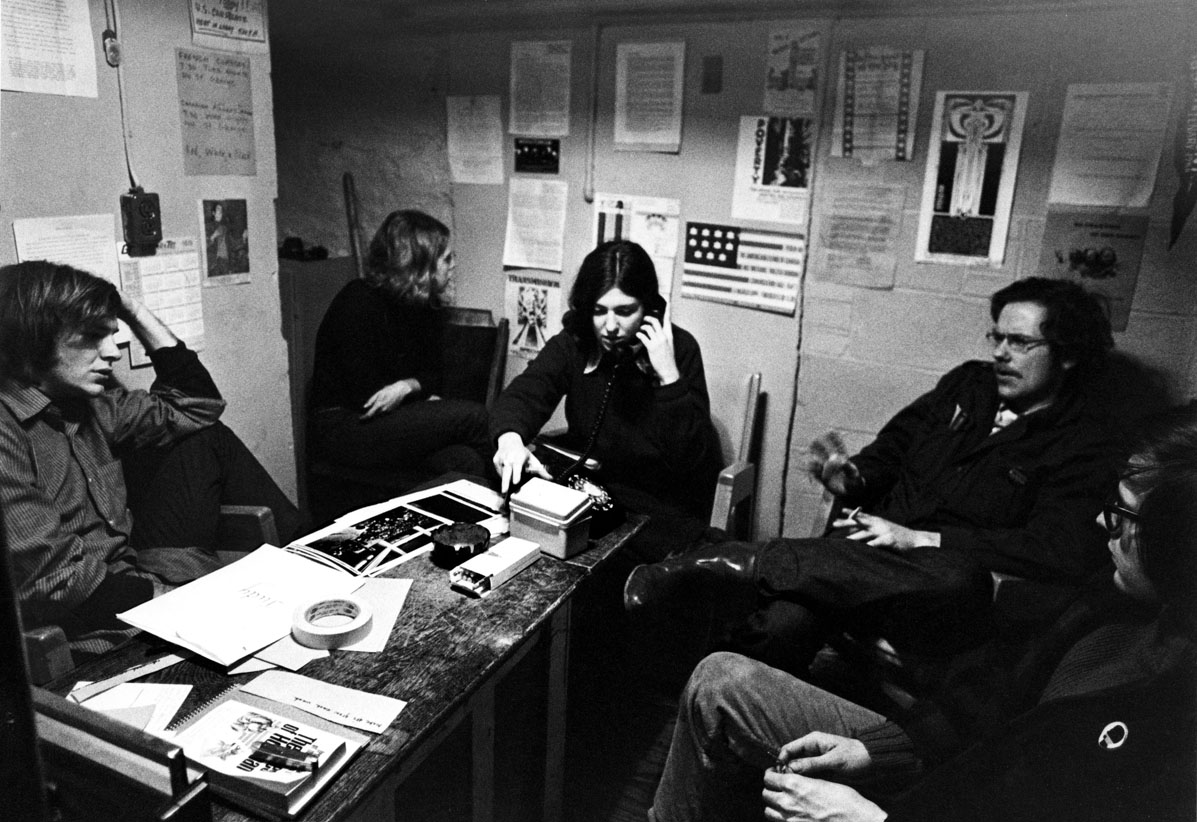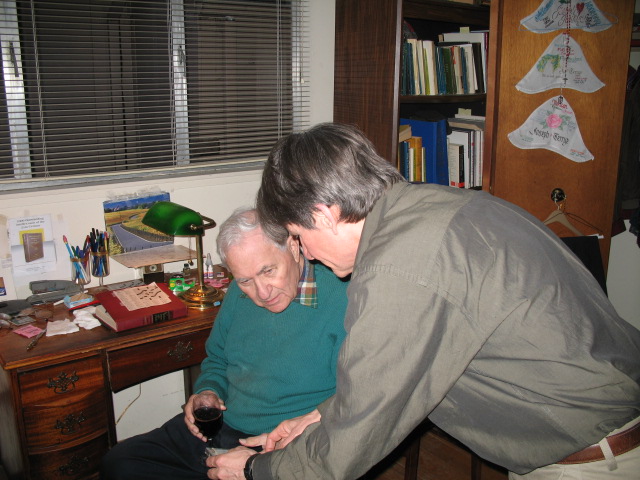ABOUT THE NEWS- LETTER
ARCHIVES:
Access All Mark Satin Articles, 2005- 2009
Access All Mark Satin Articles, 1999- 2004
Access John Avlon Archive, 2004-2006
RADICAL MIDDLE, THE BOOK:
OUR CONGRES- SIONAL SCORECARDS:
109th and 110th Congresses (2005-08)
OUR POLITICAL BOOK AWARD WINNERS:
RESPONSES FROM OTHERS:
Feisty E-mails to the Editor, 2008 - 2009
Feisty E-mails to the Editor, 2007
Feisty E-mails to the Editor, 2006
Feisty E-mails to the Editor, 2005
Feisty Letters to the Editor, 2002-04
Feisty Letters to the Editor, 1999-2001
WHO WE ARE:
About the Editor (In-House Version)
About the Editor (By Marilyn Ferguson)
About Our Sponsor, the Center for Visionary Law
Playing the
Fool
(Mark Satin Biography)
by Marilyn Ferguson
Note from Mark Satin: Marilyn Ferguson (1938-2008, r.i.p.) was author of a global bestseller, The Aquarian Conspiracy; she was also editor of the late, lamented Leading Edge Bulletin, predecessor to all my newsletters. This is Ms. Ferguson’s extraordinary foreword to a collection of my articles from New Options Newsletter, New Options for America (California State University Press, 1991). Everything I’ve done since 1991 -- including stopping New Options to go to law school (at the age of 46), practicing business law, and starting a new newsletter, Radical Middle, with a much more mainstream orientation -- fits right into Ms. Ferguson's picture of me, for better or worse.

Satin (far left) counseling American draft resisters in Toronto, 1967. See Ferguson's eighth paragraph below. Photo kindly donated to this Web site and the public domain by Laura Jones.
_______________
Playing the Fool
“Be outrageous,” someone once said. “It’s the only place that isn’t crowded.”
In the sense that Mark Satin has been walking the edge since he was a teenage newspaper columnist, he is outrageous. In the sense that he has defined and redefined his philosophy without apology, Mark Satin surprises us. Yet it becomes ever more evident that such bold, self-defining people are the only antidote for a society sick from a prolonged diet of appearances.
In these pages Mark proposes that it’s time for Americans to adopt the creative attitude of the nation’s founders. In that spirit he offers a number of imaginative possibilities -- what we might call unconventional wisdom. Are these ideas do-able? A few years ago knowledgeable people thought that Ted Turner was crazy to think there would be an audience for an all-news television network.
In a way, Mark’s life is as instructive as his writings. In the tradition of Buckminster Fuller he seems to be living his life as an experiment.
At 14 he convinced the editor of the Red River Scene (Moorhead, Minnesota) to let him write a newspaper column on teenage affairs. Living in a small town, he was dreaming of city lights -- and parks and buildings and roadways. He read books by social critics like Lewis Mumford, Paul Goodman and Jane Jacobs and conceived of a career as a city planner. He would create a city that would inspire people to be citizens of a different kind.
He went off to college to be instructed. But toward the end of the first semester the dean broke the news. City planners were not expected to be visionary, he told Mark; they were lucky to get the sewers laid properly.
By then Mark had a new passion. He dropped out of college in the winter of 1965 to work for civil rights in Mississippi.
Back at school he became one of the hotter heads in the SDS chapter. As he recalls it, “The more radical I became, the more people seemed to like me. Soon I’d convinced myself that the U.S. was so evil that even living here was participating in the Viet Nam war.” After his sophomore year he emigrated to Canada. At 20 he launched and directed the Toronto Anti-Draft Programme and wrote an underground best-seller, Manual for Draft-Age Immigrants to Canada.
“After a couple of years I began to realize the seriousness of my emigration,” Mark says now. “Unless there was amnesty, I’d be stuck there forever. Partly to ward off my pain and regret, I decided that ambition was the root of all evil.”
During the anti-ambition experiment he hitchhiked across Canada 16 times, indulged in the current equivalent of wine-women-and-song, and tried his hand at union organizing and underground journalism. Finally, while writing an article about a supposedly oppressed group of workers, “something snapped. I had to confront the fact that I no longer believed in my own Marxist rhetoric.”
Until then he had been approaching life in terms of abstract collectives rather than trying to understand himself. Suddenly he saw relevance in writers he had rejected as too apolitical or “spiritual”: E.F. Schumacher, Ivan Illich, J. Krishnamurti. Out of this exploration came an autobiographical novel, Confessions of a Young Exile, published by Gage/Macmillan of Canada. The author was highly critical of his protagonist, who appeared to be having fun, “showing himself brave and strong and radical,” Mark recalls, but was “sliding down a slippery slope,” haunted by a subliminal suspicion that nothing really made sense.
The advance from the novel and odd jobs paid the bills for another experiment. Mark wrote a pamphlet, New Age Politics, printed 500 copies and took them to the World Symposium on Humanity in Vancouver in 1976. The pamphlet sold out in four days and was featured in the Toronto Star. A Canadian publisher contracted for a book-length version, which was released in 1978. A still longer version was later issued in the U.S. by Delta/Dell.
After President Jimmy Carter granted amnesty to American expatriates Mark spent a year giving talks and workshops on the book, then another year traveling the U.S. by Greyhound bus. He was determined to meet people who were working and thinking differently. He was laying the groundwork for the New World Alliance, a national political organization based in Washington, D.C. For three years he served on the staff.
The New World Alliance “governing council” met semi-annually to discuss strategies for social transformation. After four or five such meetings Mark realized how little practical action comes out of intoxicating rhetoric. He decided to do one thing that seemed practical and concrete -- start a national political newsletter.
He calculated that he needed $90,000 for the undertaking. When he appealed to New World Alliance members and others who had participated in his workshops, 517 individuals donated a total of $91,000. In 1989 his eight-page newsletter, New Options, won the Utne Reader “Alternative Press Award for General Excellence.” As Mark says, the constant feedback from readers “drew me to subjects -- tax policy and school reform, for example -- that I’d had little patience for when I wanted the world to change overnight.”
It has been said that the difference between successful people and most others is that successful people “fail” more often. In other words, experiments always yield information. Mark’s life -- a series of experiments -- shows that it’s important for all of us to rediscover the importance of commitment and experiment.
Mark is beginning to view his life trajectory with a little more compassion. He likes to say he’s living evidence of “what you can do with determination and no fancy credentials or resources.” And yet he did have one priceless resource: the courage of his conviction.
In certain esoteric systems, the Fool is considered the most advanced level of spiritual attainment. The Fool, in this light, is trusting enough to throw himself headlong into life. The Fool makes mistakes -- and thereby makes discoveries. This is a book of such discoveries.
_______________
Copyright 1991 by California State University Press. Reprinted with permission.

The prodigal returns, 2007. Photo kindly donated to this Web site and the public domain by Ralph Tyko. The story of Satin's journey through 2007 is told in Lynda Hurst, "A Picture and a Thousand Words," Toronto Star, August 24, 2008.
ABOUT THE RADICAL MIDDLE CONCEPT
50 Thinkers and Activists DESCRIBE the Radical Middle
50 Best Radical Middle BOOKS of the '00s
GREAT RADICAL MIDDLE GROUPS AND BLOGS:
100 Great Radical Centrist GROUPS and Organizations
25 Great Radical Centrist BLOGS
SOME PRIOR RADICAL MIDDLE INITIATIVES:
Generational Equity and Communitarian platforms 1990s
First U.S. Green Party gatherings, 1987 - 1990
Green Party's "Ten Key Values" statement, 1984
New World Alliance, 1979 - 1983
PDF of the Alliance's "Transformation Platform," 1981
SOME RADICAL MIDDLE LESSONS:
What the Draft Resistance Movement Taught Me
What the Civil Rights Movement Taught Me
SOME PRIOR WRITINGS BY MARK SATIN:
New Options Newsletter, 1984-1992 (includes back issue PDFs!)
New Age Politics: Healing Self and Society, 1976, 1978 (includes 1976 text PDF!)
OTHER
PRIOR RADICAL MIDDLE TEXTS:
50 Best "Third Way" Books of the 1990s
25 Best "Transformational" Books of the 1980s
25 Best "New Age Politics" Books of the 1970s
NOT JUST RADICAL MIDDLE:
50 Current Political IDEOLOGIES
50 Current Political MANIFESTOS